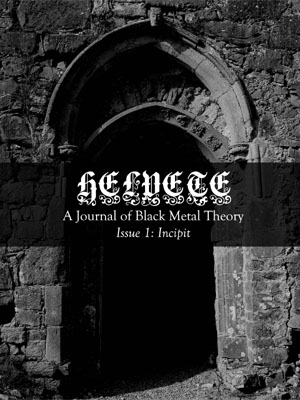 As part of the burgeoning movement to understand metal and how it relates to the world, comes the first issue of Helvete: A Journal of Black Metal Theory. Although the title of the publication may imply that it is a technical analysis of black metal composition, this is not the case. As the back cover states, “Not to be confused with metal studies, music criticism, ethnography, or sociology, Black Metal Theory is a speculative and creative endeavor, one which seeks ways of thinking that count as Black Metal events — and indeed, to see how Black Metal might count as thinking.”
As part of the burgeoning movement to understand metal and how it relates to the world, comes the first issue of Helvete: A Journal of Black Metal Theory. Although the title of the publication may imply that it is a technical analysis of black metal composition, this is not the case. As the back cover states, “Not to be confused with metal studies, music criticism, ethnography, or sociology, Black Metal Theory is a speculative and creative endeavor, one which seeks ways of thinking that count as Black Metal events — and indeed, to see how Black Metal might count as thinking.”
The book consists of about a half dozen short essays in a contemporary writing style, with full sourcing, complemented by some photographs of black metal musicians and landscapes. Subjects covered in the book range from suicide, ecocide, self-discovery, and more. Rather than treating black metal as both the beginning and end point of the book, it is instead the launching ground for exploration of how black metal’s spirit can find meaning in a cold and modernist world. The flaw in this is that some essays form a rather tenuous link to black metal, often distorted by what the authors want black metal to be, rather than what it actually is.
Of note for exploring this style is the essay by David Prescott-Steed with the admittedly disarming title of “Frostbite on my Feet: Representations of Walking in Black Metal Visual Culture”
Walking can be understood as a transitional practice whereby a person steps into, and through, a complex set of spatial and cognitive relationships. An example of such a theory of walking can be seen in the act of stepping through the doorway of a Gothic Cathedral (Notre Dame, for instance). Entering the westwork has long held physical and religious significance for Catholic devotees, symbolising one’s departure from a world in which a conceived God is incomprehensible and indeterminable (a transcendental space) into a space of communion with that God (an immanental space). Each step into the vast and ornate interior space of the nave, and beyond, comprises a transitional ritual that puts the walker in dialogue with the sacred.
The link to black metal given:
Truncated by the public’s engagement with the spectacle of Black Metal, the less exotic practice of walking nonetheless remains an important practice within the genre.Its significance can be seen in two recent documentaries on Black Metal: Vice Broadcasting System (VBS)’s True Norwegian Black Metal and Aaron Aites and Audrey Ewell’s Until the Light Takes Us. In the first instance, Gaahl (the documentary’s leading figure and the former frontman of Gorgoroth) insists that the film crew join him on a long trek into the Norwegian tundra. The hike draws our attention to the meaningfulness of the journey and speaks to the aura of solitude and endurance, of a confrontation with the unknown and human potential. Gaahl enforces: “I become what never fails, following the footsteps behind me.” In Until the Light Takes Us, slow-motion footage of Darkthrone’s Fenriz walking along a snowy forest path seems to evoke similar notions of the shadows of former selves seeking an obscured locus of self-authenticity. Both examples illustrate the capacity of walking to communicate a deeply planted Black Metal aesthetic.
This is indicative of the book’s tendency to have a coherent and intelligent view to convey in the essay, but have the given connection to black metal be suspect. A better idea would be to focus on the music, rather than aesthetics. (What’s more solitary than Transilvanian Hunger? Reference this instead.)
Other questionable choices include analyzing the compositions of Wolves in the Throne Room as being the last gasp of nature in an increasingly concrete world, the apparently transcendent lyrics of a band calling itself Make a Change…Kill Yourself, and how a slashed black t-shirt stuck to a wall is representative of “Ornament and crime (Hvis Lyset Tar Oss)”.
These flaws aside, the content of these essays can be interesting in itself, such as the idea that portable music represents a shield between us and a decaying word; where black metal heralds its deconstruction and the triumph of the wilderness, praise of the physical action of exploration, and how all worthwhile knowledge is achieved through struggle.
For people (like this author), who were hoping for a measured and academic analysis of black metal’s original music, meaning, and spirit, you will probably be disappointed. However, if one views the book as a collection of reasonably intelligent contemporary writers exploring unpopular subjects in the shadow of an often misunderstood genre, you will perhaps find something of interest.
5 CommentsTags: academia, Black Metal
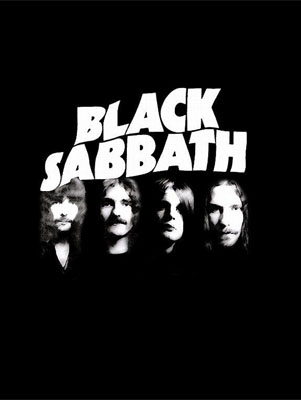 Black Sabbath has revealed their complete North American touring schedule for the summer and fall of 2013.
Black Sabbath has revealed their complete North American touring schedule for the summer and fall of 2013. 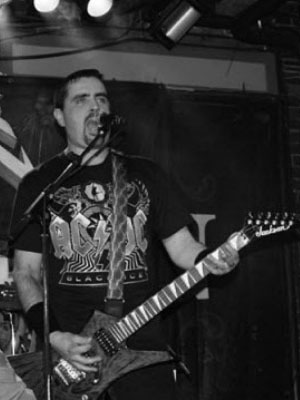
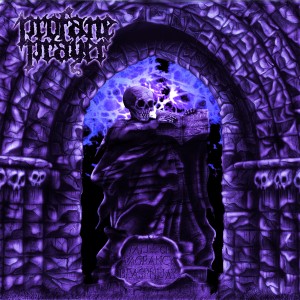 One of the things that distinguished Norwegian black metal from what had preceded it was its emphasis on storytelling: inviting the listener to not just observe, but be an active participant in discovering the meaning behind the work. The elements of composition were not, in themselves, the end goal of a song, but rather were tools used to convey the artist’s intention.
One of the things that distinguished Norwegian black metal from what had preceded it was its emphasis on storytelling: inviting the listener to not just observe, but be an active participant in discovering the meaning behind the work. The elements of composition were not, in themselves, the end goal of a song, but rather were tools used to convey the artist’s intention. As part of the burgeoning movement to understand metal and how it relates to the world, comes the first issue of
As part of the burgeoning movement to understand metal and how it relates to the world, comes the first issue of  In the mainstream press, black metal has a reputation for being solely misanthropic, heavily distorted anthems of aggression and despair that are defined by their primitive minimalism.
In the mainstream press, black metal has a reputation for being solely misanthropic, heavily distorted anthems of aggression and despair that are defined by their primitive minimalism. 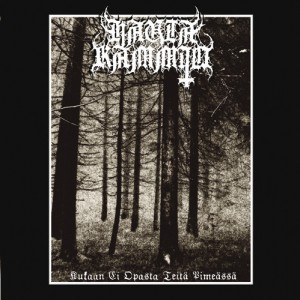 During the early days of black metal, it was acknowledged that punk had been a major musical influence on the genre. In particular,
During the early days of black metal, it was acknowledged that punk had been a major musical influence on the genre. In particular, 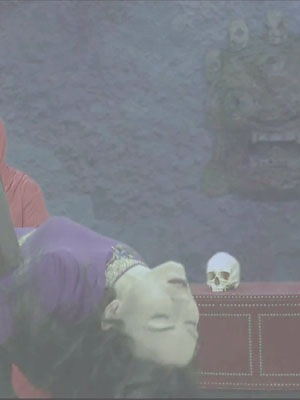 Noteworthy doom metal band
Noteworthy doom metal band 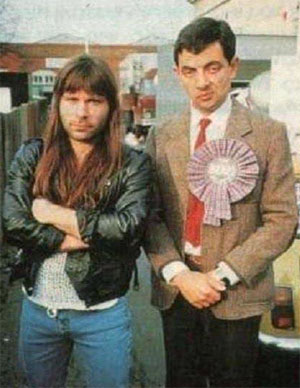 As further indication of academia embracing heavy metal,
As further indication of academia embracing heavy metal, 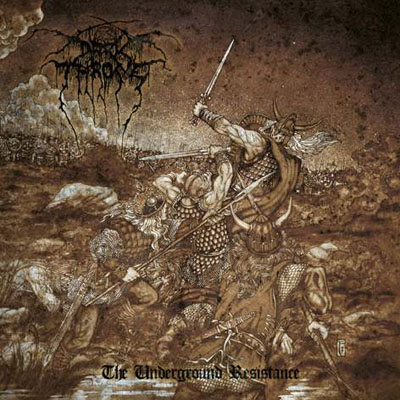 Review: Continuing
Review: Continuing 
